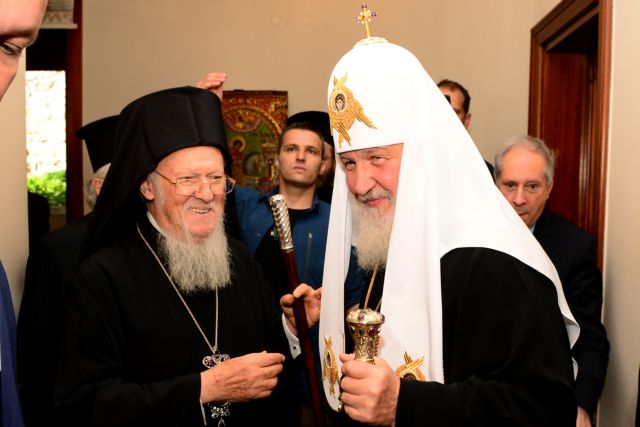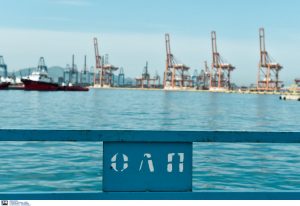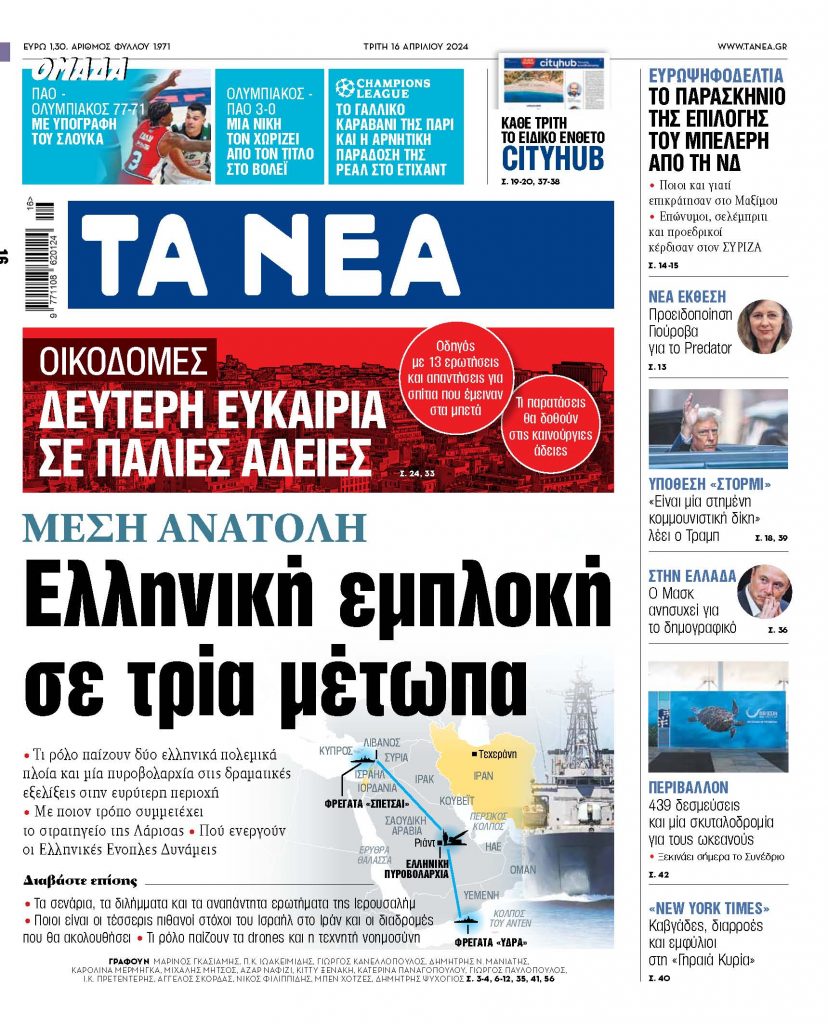By Maria Antoniadou
The meeting between Ecumenical Patriarch Vartholomeos and Patriarch of Moscow Kirill on 31 August had some of the elements of a Cold War summit.
The two church leaders, who have distinguished themselves in ecclesiastical diplomacy, are called upon to cut a Gordian knot with political, diplomatic and military parameters, over which the two churches have been haggling for over 400 years.
The Ukrainian issue, and the prospect of the Ecumenical Patriarchate granting the Orthodox Church of Ukraine autocephaly (the status of an independent, self-administered church) is the largest and most serious administrative problem since the collapse of the Soviet Union.
Two different historical schools are confronting each other: tradition versus power.
Vartholomeos and Kyrill have often been tested in such difficult situations. Each was mentored by one of the great masters of church diplomacy – Metropolitan of Chalcedon Meliton Hatzis and Metropolitan of Leningrad Nikodim Rotov, respectively, in the era of Gromyko and Kissinger.
Acqaintance and 50 years of training
The 270th Primate of the Church of Constantinople and the 16th Primate of the Church of Russia have known each other for over 50 years. Both born in the 1940s, they lived through the period of the “walls” and are said to have met for the first time in Uppsala, Sweden in 1968, at an international Christian dialogue. The 22-year-old Kirill was accompanying Metropolitan Nikodim, the shadow strong man who shepherded the Moscow Patriarchate into the World Council of Churches, and on that trip became a member of the Council’s central committee.
Shortly thereafter, Nikodim was appointed president of the Moscow Patriarchate’s Department for External Church Relations, a sort of foreign ministry.
He headed the Russian missionary delegation in Jerusalem, the dialogue with the Roman Catholic and Protestant Churches, and organised in the 1970’s the parishes of the Moscow Patriarchate in Western Europe and America. At that time, the predominant issue in Orthodoxy was organising the Great and Holy Council of the Orthodox Churches, the first since the Great Schism of 1054 with the Roman Catholic Church.
Nikodim’s sudden death from a heart attack while on a visit to the Vatican in September, 1978, stirred shock in the Orthodox community. Twenty days later, the newly-elected Pope John Paul I died only 33 days after his election.
In Nikodim’s entire journey – from Leningrad to Minsk to Nairobi to Constantinople to the Holy Land to the Vatican to Finland, he was training his star pupil – whose lay name was Vladimir Mihailovich Gundyaev – the current Patriarch Kirill of Moscow and All Russia, who succeeded Nikodim as head of the Patriarchate’s Department for External Church Relations, which he bolstered in the 1990’s after the collapse of the Soviet Union.
On 31 August, Kirill again visited the Ecumenical Patriarchate after his first visit 40 years ago, when he accompanied Patriarch Pimen I.
Kirill was received by Ecumenical Patriarch Vartholomeos, the spiritual child of Metropolitan Meliton of Chalcedon, the master of ecclesiastical diplomacy, who traveled the world representing the Ecumenical Patriarchate, and who had the vision to lift the anathemas that the Orthodox and Roman Catholic churches placed on each other in 1054.
He accompanied Ecumenical Patriarch Athenagoras on his trip to Jerusalem to meet Pope Paul VI, the first such meeting in the nearly 1,000 years since the Great Schism.
Shortly thereafter, Meliton visited the Vatican, presided over the first Pan-Orthodox Conference in Rhodes in 1961, which discussed plans for the Holy and Great Council, and mentored Dimitrios Arhontonis, the lay name of Ecumenical Patriarch Vartholomeos, who met Kirill for the first time at the age of 28.
The Gordian knot of the Ukrainian issue
Forty one years ago, in October, 1977, at the seat of the Ecumenical Patriarchate in the Phanar, the late patriarchs Dimitrios of Constantinople and Pimin of Moscow allowed Metropolitan Meliton Hatzis of Chalcedon and Metropolitan Nikodim of Leningrad cross swords on their behalf over the Ukrainian question, with the watchful eye of Vartholomeos and Kirill.
Those then young bishops must now cut the Gordian knot of the Ukrainian problem, and the outlook is ominous. The first battles have begun, and the patriarchs’ associates have issued statements. The two sides are marshaling all their forces and their ties to other Orthodox churches, pressuring even patriarchs and archbishops.
Vartholomeos, who along with the Patriarch of Georgia and the Archbishop of Albania are the longest-serving heads of Orthodox Churches – has handled other difficult situations. Just five years after he was elected patriarch, he had to deal with the problem of the Church of Estonia, and the restoration of its autonomy as it was in 1923, and which was abolished after WWII when the Baltic states were attached to the Soviet Union.
The Ecumenical Patriarch acted in line with historical precedent. Patriarch Alexei, however, was the first Ukrainian Patriarch of Russia. He saw the issue as a casus belli, and for nearly three months in 1996 Alexei stopped memorialising (praying for) Vartholomeos in church services, which implies a temporary severing of relations.
Moreover, Alexei did not attend the celebration on the island of Patmos, marking the 1,000th anniversary of the writing of the Book of Revelation on that island.
At the same time, then Metropolitan Kirill of Smolensk was participating in the battle, in his capacity as head of the Department of External Church relations (which acts as a sort of foreign ministry), and did not hide his great fear, that Estonian Church independence was just the beginning, and that Ukraine is next.
When in 2008 Vartholomeos received a letter from then Ukrainian president Viktot Yashchenko (who was then openly clashing with Vladimir Putin) inviting him to attend the 1020th anniversary of the baptism of the Kievan Rus, there were daily threats of a schism (a sort of ecclesiastical divorce) in the contacts between Vartholomeos and Alexei, whose associates were declaring that the Ecumenical Patriarch would best not come.
Finally, Vartholomeos did travel to Kiev, and thousands of Ukrainians lined the streets to welcome him. Patriarch Alexei, who went despite his serious health problems, arrived at the last minute, with Kirill by his side.
In October, Patriarch Alexei and Kirill visited Vartholomeos at the Phanar, and the Ukrainian issue was temporarily put aside for the sake of unity. Alexei died two months later, and Kirill succeeded him.
The road from Kolymbari to Constantinople
Unity was often tested since then, and the seamless robe of the Church was seriously endangered when Kirill did not attend the Great and Holy Council at Kolymbari, Crete, which convened after decades of preparation.
A few months later, Ukrainian President Petro Poroshenko began demanding autonomy for his country’s church.
Patriarch Kirill, in a good will gesture, began indirectly calling for the Ecumenical Patriarch to visit Moscow. When Kirill’s ’s successor in the External Church Relations Department, Metropolitan Hilarion of Volokolamsk failed to persuade the Phanariot Metropolitan bishops for a summit meeting, even on neutral ground.
As it seems, Vartholeos and Cyril were again unable to transcend the intractable difficulties of the Ukrainian question at their last meeting, after which the Phanar said that “the Ecumenical Patriarchate does not blackmail and will not be blackmailed”.


